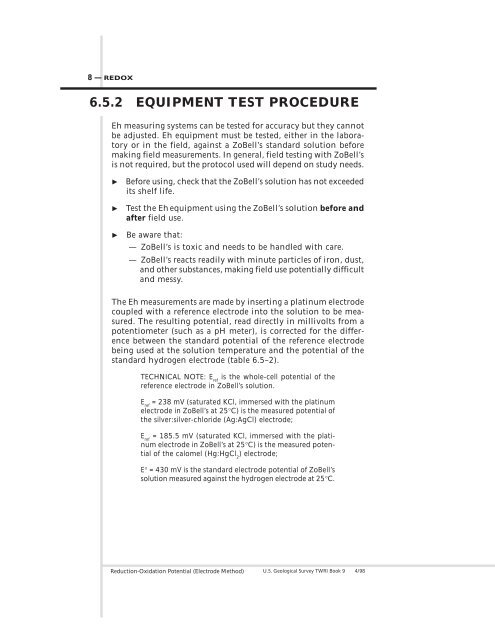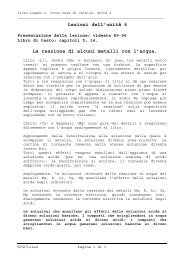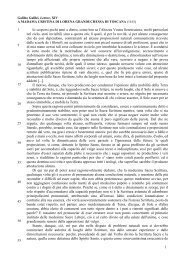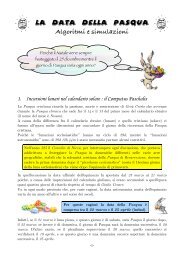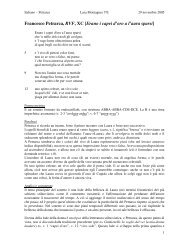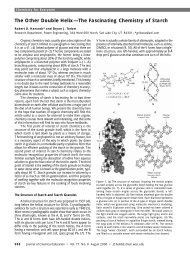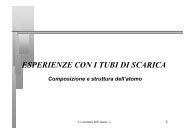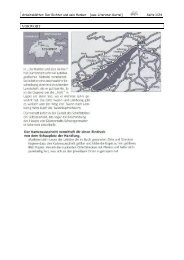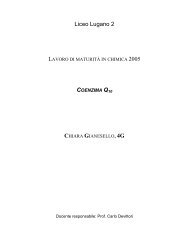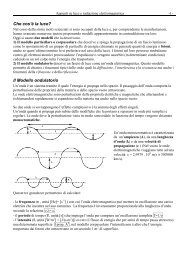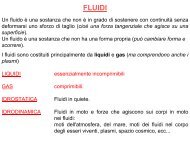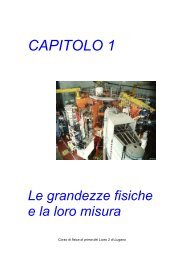6.5 REDUCTION- OXIDATION POTENTIAL (ELECTRODE METHOD)
6.5 REDUCTION- OXIDATION POTENTIAL (ELECTRODE METHOD)
6.5 REDUCTION- OXIDATION POTENTIAL (ELECTRODE METHOD)
You also want an ePaper? Increase the reach of your titles
YUMPU automatically turns print PDFs into web optimized ePapers that Google loves.
8—REDOX<strong>6.5</strong>.2 EQUIPMENT TEST PROCEDUREEh measuring systems can be tested for accuracy but they cannotbe adjusted. Eh equipment must be tested, either in the laboratoryor in the field, against a ZoBell’s standard solution beforemaking field measurements. In general, field testing with ZoBell’sis not required, but the protocol used will depend on study needs. Before using, check that the ZoBell’s solution has not exceededits shelf life. Test the Eh equipment using the ZoBell’s solution before andafter field use. Be aware that:— ZoBell’s is toxic and needs to be handled with care.— ZoBell’s reacts readily with minute particles of iron, dust,and other substances, making field use potentially difficultand messy.The Eh measurements are made by inserting a platinum electrodecoupled with a reference electrode into the solution to be measured.The resulting potential, read directly in millivolts from apotentiometer (such as a pH meter), is corrected for the differencebetween the standard potential of the reference electrodebeing used at the solution temperature and the potential of thestandard hydrogen electrode (table <strong>6.5</strong>–2).TECHNICAL NOTE: E refis the whole-cell potential of thereference electrode in ZoBell’s solution.E ref= 238 mV (saturated KCl, immersed with the platinumelectrode in ZoBell’s at 25°C) is the measured potential ofthe silver:silver-chloride (Ag:AgCl) electrode;E ref= 185.5 mV (saturated KCl, immersed with the platinumelectrode in ZoBell’s at 25°C) is the measured potentialof the calomel (Hg:HgCl 2) electrode;E° = 430 mV is the standard electrode potential of ZoBell’ssolution measured against the hydrogen electrode at 25°C.Reduction-Oxidation Potential (Electrode Method) U.S. Geological Survey TWRI Book 9 4/98


